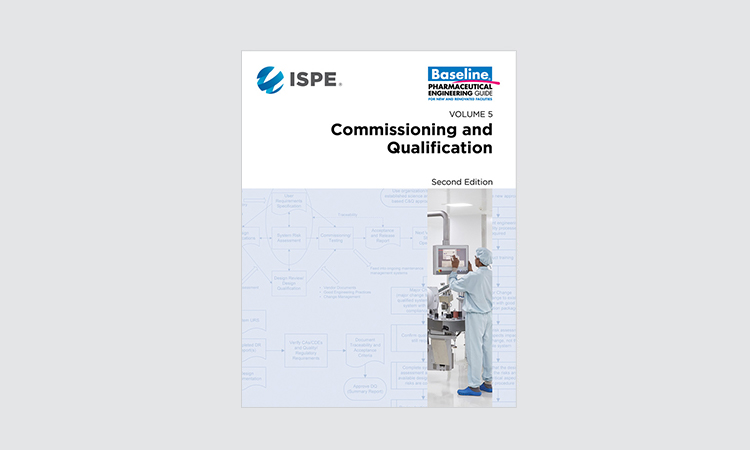Design Review/Design Qualification

This blog is the last of four posts addressing questions received during the August 2019 webinar summarizing the introduction of 2nd Edition, ISPE Baseline Guide Vol 5: Commissioning and Qualification. The guide provides a well-defined framework for a lifecycle quality risk management (QRM) commissioning and qualification (C&Q) approach to verification and documentation of fitness for use.
Over the coming weeks, each blog post will cover four key focus areas discussed in the guide. The posts will be followed by a live townhall session, scheduled for Tuesday, 7 July 2020. The townhall will be moderated by the panel of authors with each panelist reviewing and answering your questions on these key areas.
The four key focus areas covered in this blog series will be:
- User Requirements Specifications (URS), moderated by Stephanie White, Amgen
- Quality Unit, moderated by Nick Haycocks, Amgen System Risk Assessment, moderated by Steve Wisniewski, CAI
- IT/GAMP® 5, moderated by Steve Wisniewski CAI and Verification (commissioning and qualification execution), moderated by Zachary Luce, Project Farma
- Design Review/Design Qualification, moderated by Nathan Temple, CAI Periodic Review, moderated by Alex Mendoza, Takeda
Design Review/Design Qualification (DR/DQ)
Design Reviews provide assurance that the design deliverables are consistent with the User Requirements Specification and the mitigation control strategies determined during the System Risk Assessment. When properly performed, Design Reviews reduce the need for costly design related change orders. Design Review is a GEP activity performed throughout the project design lifecycle. Design Review feeds the Design Qualification process, for Direct Impact systems. 1. Design Qualification provides documented verification that the design of new equipment will result in a system that is suitable for the intended purpose.
Design Qualification provides documented QA approved evidence: 1. Procured system or equipment meets User Requirements Specification, 2. equipment adequately controls risk as identified during the system risk assessment and 3. that Critical aspects/Critical Design Elements necessary to implement requirements and risk controls are present4. Design Review and Design Qualification are not intended to be separate activities. The Design Review feeds the Design Qualification via the requirements traceability matrix. Design Qualification is focused on Critical aspects and Critical Design Elements and involves the Quality unit as an approver.
Is Design Qualification a required activity?
A: For EU regulations yes (see EU Annex 15 and ICH Q7). For Non-EU it is increasingly expected and within BG5 it is a required practice for (direct impact systems) due to the following fundamentals: Design Qualification provides documented verification that the design of new equipment will result in a system that is suitable for the intended purpose. A simple Design Qualification in the form of an approval sheet to the requirements traceability matrix (RTM) provides the documentation that; 1. Procured system or equipment meets User Requirements Specification, 2. equipment adequately controls risk as identified during the system risk assessment and 3. that Critical aspects/Critical Design Elements necessary to implement requirements and risk controls are present. A system’s Critical Design Elements or risk controls could extend to automation tie-in, data integrity, SOPs etc. The Design Qualification is a key input to the commissioning and qualification Plan. Furthermore, post Quality Unit approval of the Design Qualification there is an expectation that commissioning protocols can be pre and post approved by Engineering only as the Quality unit pre-approved the Critical aspects/Critical Design Elements and verification strategy within the commissioning and qualification Plan approval.
Are Design Qualifications recommended for “off-the-shelf” systems?
Yes, within the scope of BG5. BG5 requires Design Review and Design Qualification (for direct impact systems) for all equipment and systems. Design Qualification provides documented verification that the design of new equipment will result in a system that is suitable for the intended purpose. As in the answer above, a simple Design Qualification in the form of an approval sheet to the requirements traceability matrix provides QA approved documentation that the procured the “off-the-shelf” system meetings intended use. Another benefit is the inclusion of risk mitigations and Critical aspects and Critical Design Elements within the Design Qualification activity. An “off-the-shelf” system can be straightforward, however its use within certain process steps and its connectivity with automation may result in other areas of focus to include customization and additional procedural controls. The Design Qualification documents which system controls are CPPs and confirms that the controls are in place. The risk assessment and Design Qualification activities provide an early look to mitigate issues and/or time sensitive actions prior to operation. For “off-the-shelf” systems the risk assessment review and Design Qualification can be a combined activity.
Is Design Review and Design Qualification truly a compliance aspect or more of a good engineering practice?
Both, Design Qualification is a compliance aspect for EU Regulations. Design Review is a good engineering practice and the final Design Review report is an input to the Design Qualification. Furthermore, the requirements traceability matrix is updated during Design Review and captured during Design Qualification as evidence that requirements and risk controls are met by the design. GEPs apply to both product and non-quality product
Periodic Review
Periodic Review (aka Validation Maintenance) refers to activities that are performed to demonstrate a qualified/validated system is maintained in a validated state. Qualified/validated systems shall be placed into a program which reviews the system to determine whether it continues to be maintained in a qualified state.
It should be noted that periodic review out of the scope of the commissioning and qualification lifecycle. The Guide draft team included this chapter in order to provide industry with a risk based approach for periodic review since companies have traditionally struggled in providing a rational in support of Periodic Review. The Guide approach builds on the QRM principles established during the QRM commissioning and qualification Process.
Is periodic review synonymous with Validation Maintenance?
Periodic review is a subset of Validation Maintenance, which includes all activities that will maintain systems in a qualified/validated state (such as periodic requalification and routine/continuous monitoring).
Does the periodic review guide imply no more than 3-year frequency? Can data be used to extend beyond 3 years?
Periodic review frequencies depend on risk assessments and shall have an associated rationale. A period beyond 3 years can be acceptable given appropriate rationale with Quality approval.
Regarding Periodic Review how do you define a low risk system?
Low risk systems are systems that will not impact product quality if periodic review is not performed. Risk categorization allows to triage systems for periodic review and are site/company specific.
Did you miss the webinar? Members can view Polishing an Old Gem: Commissioning & Qualification Baseline Guide Update webinar. Not a member? Join Today!
Join us next week for the LIVE Commissioning & Qualification Townhall and Panel Discussion. Registration is now open.
Demystifying Your Questions on the revised C&Q Baseline Guide Vol. 5 Panel and Q&A
Tuesday, 7 July 2020
Time: 1100 - 1200 EDT








